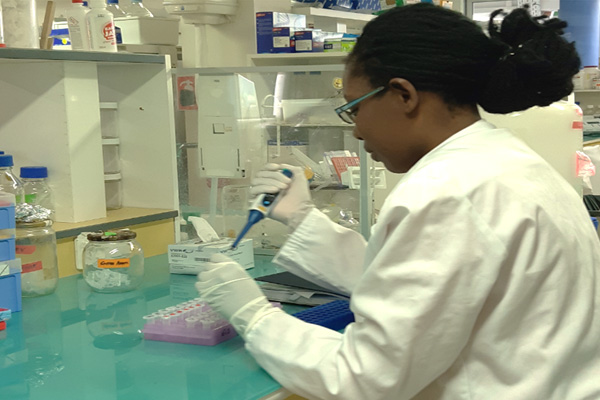Bacterial contamination of intensive care unit surfaces is of clinical concern because it is one of the major risk factors of intensive care unit-acquired infections and centre point of multidrug resistant (MDR) pathogens. This study aimed to determine the distribution of bacteria isolated from the hands of health care workers (HCWs) and inanimate surfaces in the neonatal intensive care unit (NICU) at the Windhoek Central Hospital. A cross-sectional, descriptive study carried out in NICU from September 2018 to October 2018 at the Windhoek Central Hospital in Windhoek. This study entailed the collection of 34 swab samples from high-contact environmental surfaces, as well as 2 swab samples from the hands of HCWs in NICU. Overall out of the surfaces swabbed, 52.8% yielded positive bacterial growth and 48.2% of the surfaces had no bacterial growth after 48 hours of incubation. Five different pathogens were identified, S. aureus, CoNS, Enterobacter species, Pseudomonas aeroginosa and Acinetobacter species respectively. CoNS accounted for majority of the bacterial pathogens isolated 70%, followed by Enterobacter species. The antimicrobial susceptibility pattern of clinically relevant pathogens tested showed similar patterns, with high resistant level to penicillin and cepholosporins. In the light of this, there is need therefore for thorough disinfection and conscientious contact control procedures to minimize the spread of these pathogens in the neonatal intensive care unit, where interaction between patients, HCWs, parents and caregivers is very common and frequent. Keywords: Nosocomial infection, Inanimate surfaces, antibiotic resistance; intensive care units; multi-drug resistance
Keywords: Nosocomial infection, Inanimate surfaces, antibiotic resistance; intensive care units; multi-drug resistance
La contamination bactérienne des surfaces des unités de soins intensifs est une préoccupation clinique car c’est l’un des principaux facteurs de risque d’infections acquises en unité de soins intensifs et le point central des agents pathogènes multirésistants au trématent médicaux. Cette étude visait à déterminer la distribution des bactéries isolées des mains des travailleurs de la santé et des surfaces inanimées au sein l'unité de soins intensifs néonatals (USIN) de l'hôpital central de Windhoek. C’est une étude descriptive transversale réalisée à l'USIN de septembre 2018 à octobre 2018 à l'hôpital central de Windhoek. Cette étude a impliqué la collecte de 34 échantillons prélevés sur des surfaces exposées à l’environnement, ainsi que de 2 échantillons prélevés sur les mains des travailleurs de la santé de l'USIN. Sur l'ensemble des surfaces nettoyées, 52,8% ont donné une croissance bactérienne positive et 48,2% des surfaces n'avaient aucune croissance bactérienne après 48 heures d'incubation. Cinq agents pathogènes différents ont été identifiés, S. aureus, CoNS, les espèces Enterobacter, Pseudomonas aeroginosa et Acinetobacter, respectivement. Le CoNS représentait la majorité des agents pathogènes bactériens isolés à 70%, suivis de l'espèce Enterobacter. Le profil de sensibilité aux antimicrobiens des agents pathogènes cliniquement pertinents testés a montré des profils similaires, avec un niveau de résistance élevé à la pénicilline et aux céphalosporines. Il est donc nécessaire de procéder à une désinfection minutieuse et à des procédures de contrôle des contacts consciencieuses afin de minimiser la propagation de ces agents pathogènes dans les unités de soins intensifs néonatals, où les interactions entre patients, agents de santé, parents et responsables de soins sont très fréquentes et fréquentes. Mots-clés: infection nosocomiale, surfaces inanimées, résistance aux antibiotiques; unités de soins intensifs; multi-résistance aux médicaments
Mots clés:infection nosocomiale, surfaces inanimées, résistance aux antibiotiques; unités de soins intensifs; multi-résistance aux médicaments
Received: Sept 27th 2019 Revised:Nov 30th 2019 Accepted:Dec 12th 2019 Published:31st Jan 2020

infosim@sim-ivoire.com
+225 43 85 33 32 / 57 11 13 72
08 BP 2300 Abidjan 08
Views:
Download:
